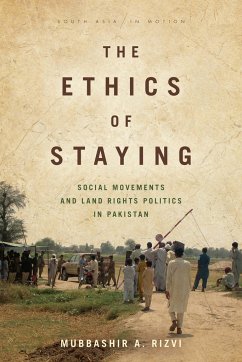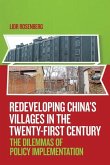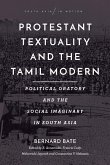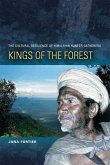- Broschiertes Buch
- Merkliste
- Auf die Merkliste
- Bewerten Bewerten
- Teilen
- Produkt teilen
- Produkterinnerung
- Produkterinnerung
Mubbashir A. Rizvi is Assistant Professor of Cultural Anthropology at Georgetown University.
Andere Kunden interessierten sich auch für
![How to Make a Wetland How to Make a Wetland]() Caterina ScaramelliHow to Make a Wetland34,99 €
Caterina ScaramelliHow to Make a Wetland34,99 €![The Integration Debate The Integration Debate]() The Integration Debate73,99 €
The Integration Debate73,99 €![Redeveloping China's Villages in the Twenty-First Century Redeveloping China's Villages in the Twenty-First Century]() Lior RosenbergRedeveloping China's Villages in the Twenty-First Century27,99 €
Lior RosenbergRedeveloping China's Villages in the Twenty-First Century27,99 €![Protestant Textuality and the Tamil Modern Protestant Textuality and the Tamil Modern]() Bernard BateProtestant Textuality and the Tamil Modern30,99 €
Bernard BateProtestant Textuality and the Tamil Modern30,99 €![Stigmas of the Tamil Stage Stigmas of the Tamil Stage]() Susan SeizerStigmas of the Tamil Stage54,99 €
Susan SeizerStigmas of the Tamil Stage54,99 €![The Alchemy of Meth The Alchemy of Meth]() Jason PineThe Alchemy of Meth20,99 €
Jason PineThe Alchemy of Meth20,99 €![Kings of the Forest Kings of the Forest]() Jana FortierKings of the Forest28,99 €
Jana FortierKings of the Forest28,99 €-
-
-
Mubbashir A. Rizvi is Assistant Professor of Cultural Anthropology at Georgetown University.
Hinweis: Dieser Artikel kann nur an eine deutsche Lieferadresse ausgeliefert werden.
Hinweis: Dieser Artikel kann nur an eine deutsche Lieferadresse ausgeliefert werden.
Produktdetails
- Produktdetails
- Verlag: Stanford University Press
- Seitenzahl: 224
- Erscheinungstermin: 7. Mai 2019
- Englisch
- Abmessung: 229mm x 152mm x 13mm
- Gewicht: 318g
- ISBN-13: 9781503608764
- ISBN-10: 150360876X
- Artikelnr.: 53544846
- Herstellerkennzeichnung
- Libri GmbH
- Europaallee 1
- 36244 Bad Hersfeld
- gpsr@libri.de
- Verlag: Stanford University Press
- Seitenzahl: 224
- Erscheinungstermin: 7. Mai 2019
- Englisch
- Abmessung: 229mm x 152mm x 13mm
- Gewicht: 318g
- ISBN-13: 9781503608764
- ISBN-10: 150360876X
- Artikelnr.: 53544846
- Herstellerkennzeichnung
- Libri GmbH
- Europaallee 1
- 36244 Bad Hersfeld
- gpsr@libri.de
Mubbashir A. Rizvi is Assistant Professor of Cultural Anthropology at Georgetown University.
Contents and Abstracts
1Introduction
chapter abstract
This chapter describes the series of events by which a local struggle
became a national event. It introduces the primary interlocutors and takes
the reader to three different villages where the author conducted most of
the interviews. These villages varied between the oldest predominantly
Christian village, another predominantly Muslim village and a third largely
mixed Muslim-Christian village in Okara district. It introduces the
different occupational castes, the traditional forms of solidarity, and how
these bonds of solidarity changed with the rise of the tenants'
mobilization. It outlines arguments on the spatial history of rights, the
provisional solidarities enabled by social movements, and the varied effect
of NGOs and urban activists on rural grassroots mobilizations.
2Politics as Process in Okara Military Farms
chapter abstract
This chapter describes the political negotiation, ruptures, and innovations
that allowed disparate groups of tenant farmers to come together across
caste, gender, and religious differences and mobilize around a class
identity as sharecroppers. The ethnographic analysis of AMP mobilization
challenges the bifurcation of social movements between the "the politics of
distribution" and "the politics of recognition." This chapter argues that
the fate of social movements is forged by how they negotiate both sides of
power. It argues that peasant movements foreground different concepts of
political possibilities from their own alternative and deeply rooted
traditions as refracted through social histories. Hence, AMP does not
presume an organic, essentialist position that is sometimes projected onto
indigenous or peasant communities, nor does it posit a utopian open future.
The politics of AMP are provisional, based around tenants' ability to
translate customary rights and obligations into political action.
Chapter 3: The Afterlife of Colonial Infrastructure
chapter abstract
This chapter looks at the regional history of canal colonization and
provides a context for the establishment of military farms at the turn of
20th century Punjab. The canal irrigation projects ushered in a new era of
regional modernity in Punjab with far reaching consequences for the
relationship between land and people in this region. This chapter analyzes
the formation of a distinct regional modernity in Punjab that brought the
colonial state and peasantry in a direct relationship. It develops the
classic theory of gift exchange to analyze the highly personalized
relationship between people and colonial institutions that was created
through large infrastructure projects that worked through dual idioms of
modern technology and customary identities. This chapter illustrates how
these dual links are appropriated and repurposed by tenant farmers to make
claims over land.
Chapter 4: What Remains Buried Under Property?
chapter abstract
This chapter examines the moral economy of land rights and the broader
understanding of land rights politics as they are understood by different
members of AMP. Land is one of the most important yet overlooked elements
of social movements because it is often regarded as an economic resource,
or exclusively as the object of contestation. However, the variation of
land settlements, land relations, and the evolution of the property regime
showcase varied cultural understandings of rights, value, and political
subjectivity that is shaped by different conceptions of land rights. This
abstract question also became an important source of discussion for the
tenant farmers once they were able to occupy and cultivate their lands.
5Movement and Mobilization
chapter abstract
This chapter describes the subaltern meaning of land rights, which is
different from the conception of rights based on citizenship and/or
property ownership. This chapter argues that the central force of a social
movement is ontological: it ushers a new way of seeing and relating to the
world. Social movements have the ability to take particular issues and
universalize them as a form knowledge and praxis. For instance, the AMP
enlarged tenants' objections to cash contract farming into a discussion of
land reform, citizenship rights, democracy, and human rights in Pakistan by
relating them to a history of the hardships of settlement, the experience
of partition, and the poverty of the sharecropping regime. This provisional
political identity is built around a narrative that allowed the tenant
farmers to bridge gender, caste, and religious differences. However, this
provisional source of solidarity grew weaker as the tenants made some
gains.
6Solidarities, Fault Lines, and the Scale of Struggle
chapter abstract
This chapter examines the problems faced by AMP as the tenants' leadership
allied with urban activists, civil society groups, and NGOs to gain
publicity and visibility for their struggle. The aim here is to understand
how scalability figures into subaltern politics of survival. The AMP
subaltern and highly local articulations of land rights were represented in
the abstract and universal framework of "Rights" favored by NGOs and "Class
struggle" advocated by Left activists. These organization helped increase
the visibility of AMP but they also created strong differences between the
tenant farmers causing a split in the movement.
7Coda
chapter abstract
The conclusion summarizes the author's approach to the study of AMP as a
relationship between land (spatiality), rights, and political subjectivity
in Punjab. Rather than looking at the settlement of the Okara military
farms or the rise of peasant mobilization in isolation, the author
demonstrates the relational aspects of technology, territory, identity, and
power in shifting relations of rule and political agency.
1Introduction
chapter abstract
This chapter describes the series of events by which a local struggle
became a national event. It introduces the primary interlocutors and takes
the reader to three different villages where the author conducted most of
the interviews. These villages varied between the oldest predominantly
Christian village, another predominantly Muslim village and a third largely
mixed Muslim-Christian village in Okara district. It introduces the
different occupational castes, the traditional forms of solidarity, and how
these bonds of solidarity changed with the rise of the tenants'
mobilization. It outlines arguments on the spatial history of rights, the
provisional solidarities enabled by social movements, and the varied effect
of NGOs and urban activists on rural grassroots mobilizations.
2Politics as Process in Okara Military Farms
chapter abstract
This chapter describes the political negotiation, ruptures, and innovations
that allowed disparate groups of tenant farmers to come together across
caste, gender, and religious differences and mobilize around a class
identity as sharecroppers. The ethnographic analysis of AMP mobilization
challenges the bifurcation of social movements between the "the politics of
distribution" and "the politics of recognition." This chapter argues that
the fate of social movements is forged by how they negotiate both sides of
power. It argues that peasant movements foreground different concepts of
political possibilities from their own alternative and deeply rooted
traditions as refracted through social histories. Hence, AMP does not
presume an organic, essentialist position that is sometimes projected onto
indigenous or peasant communities, nor does it posit a utopian open future.
The politics of AMP are provisional, based around tenants' ability to
translate customary rights and obligations into political action.
Chapter 3: The Afterlife of Colonial Infrastructure
chapter abstract
This chapter looks at the regional history of canal colonization and
provides a context for the establishment of military farms at the turn of
20th century Punjab. The canal irrigation projects ushered in a new era of
regional modernity in Punjab with far reaching consequences for the
relationship between land and people in this region. This chapter analyzes
the formation of a distinct regional modernity in Punjab that brought the
colonial state and peasantry in a direct relationship. It develops the
classic theory of gift exchange to analyze the highly personalized
relationship between people and colonial institutions that was created
through large infrastructure projects that worked through dual idioms of
modern technology and customary identities. This chapter illustrates how
these dual links are appropriated and repurposed by tenant farmers to make
claims over land.
Chapter 4: What Remains Buried Under Property?
chapter abstract
This chapter examines the moral economy of land rights and the broader
understanding of land rights politics as they are understood by different
members of AMP. Land is one of the most important yet overlooked elements
of social movements because it is often regarded as an economic resource,
or exclusively as the object of contestation. However, the variation of
land settlements, land relations, and the evolution of the property regime
showcase varied cultural understandings of rights, value, and political
subjectivity that is shaped by different conceptions of land rights. This
abstract question also became an important source of discussion for the
tenant farmers once they were able to occupy and cultivate their lands.
5Movement and Mobilization
chapter abstract
This chapter describes the subaltern meaning of land rights, which is
different from the conception of rights based on citizenship and/or
property ownership. This chapter argues that the central force of a social
movement is ontological: it ushers a new way of seeing and relating to the
world. Social movements have the ability to take particular issues and
universalize them as a form knowledge and praxis. For instance, the AMP
enlarged tenants' objections to cash contract farming into a discussion of
land reform, citizenship rights, democracy, and human rights in Pakistan by
relating them to a history of the hardships of settlement, the experience
of partition, and the poverty of the sharecropping regime. This provisional
political identity is built around a narrative that allowed the tenant
farmers to bridge gender, caste, and religious differences. However, this
provisional source of solidarity grew weaker as the tenants made some
gains.
6Solidarities, Fault Lines, and the Scale of Struggle
chapter abstract
This chapter examines the problems faced by AMP as the tenants' leadership
allied with urban activists, civil society groups, and NGOs to gain
publicity and visibility for their struggle. The aim here is to understand
how scalability figures into subaltern politics of survival. The AMP
subaltern and highly local articulations of land rights were represented in
the abstract and universal framework of "Rights" favored by NGOs and "Class
struggle" advocated by Left activists. These organization helped increase
the visibility of AMP but they also created strong differences between the
tenant farmers causing a split in the movement.
7Coda
chapter abstract
The conclusion summarizes the author's approach to the study of AMP as a
relationship between land (spatiality), rights, and political subjectivity
in Punjab. Rather than looking at the settlement of the Okara military
farms or the rise of peasant mobilization in isolation, the author
demonstrates the relational aspects of technology, territory, identity, and
power in shifting relations of rule and political agency.
Contents and Abstracts
1Introduction
chapter abstract
This chapter describes the series of events by which a local struggle
became a national event. It introduces the primary interlocutors and takes
the reader to three different villages where the author conducted most of
the interviews. These villages varied between the oldest predominantly
Christian village, another predominantly Muslim village and a third largely
mixed Muslim-Christian village in Okara district. It introduces the
different occupational castes, the traditional forms of solidarity, and how
these bonds of solidarity changed with the rise of the tenants'
mobilization. It outlines arguments on the spatial history of rights, the
provisional solidarities enabled by social movements, and the varied effect
of NGOs and urban activists on rural grassroots mobilizations.
2Politics as Process in Okara Military Farms
chapter abstract
This chapter describes the political negotiation, ruptures, and innovations
that allowed disparate groups of tenant farmers to come together across
caste, gender, and religious differences and mobilize around a class
identity as sharecroppers. The ethnographic analysis of AMP mobilization
challenges the bifurcation of social movements between the "the politics of
distribution" and "the politics of recognition." This chapter argues that
the fate of social movements is forged by how they negotiate both sides of
power. It argues that peasant movements foreground different concepts of
political possibilities from their own alternative and deeply rooted
traditions as refracted through social histories. Hence, AMP does not
presume an organic, essentialist position that is sometimes projected onto
indigenous or peasant communities, nor does it posit a utopian open future.
The politics of AMP are provisional, based around tenants' ability to
translate customary rights and obligations into political action.
Chapter 3: The Afterlife of Colonial Infrastructure
chapter abstract
This chapter looks at the regional history of canal colonization and
provides a context for the establishment of military farms at the turn of
20th century Punjab. The canal irrigation projects ushered in a new era of
regional modernity in Punjab with far reaching consequences for the
relationship between land and people in this region. This chapter analyzes
the formation of a distinct regional modernity in Punjab that brought the
colonial state and peasantry in a direct relationship. It develops the
classic theory of gift exchange to analyze the highly personalized
relationship between people and colonial institutions that was created
through large infrastructure projects that worked through dual idioms of
modern technology and customary identities. This chapter illustrates how
these dual links are appropriated and repurposed by tenant farmers to make
claims over land.
Chapter 4: What Remains Buried Under Property?
chapter abstract
This chapter examines the moral economy of land rights and the broader
understanding of land rights politics as they are understood by different
members of AMP. Land is one of the most important yet overlooked elements
of social movements because it is often regarded as an economic resource,
or exclusively as the object of contestation. However, the variation of
land settlements, land relations, and the evolution of the property regime
showcase varied cultural understandings of rights, value, and political
subjectivity that is shaped by different conceptions of land rights. This
abstract question also became an important source of discussion for the
tenant farmers once they were able to occupy and cultivate their lands.
5Movement and Mobilization
chapter abstract
This chapter describes the subaltern meaning of land rights, which is
different from the conception of rights based on citizenship and/or
property ownership. This chapter argues that the central force of a social
movement is ontological: it ushers a new way of seeing and relating to the
world. Social movements have the ability to take particular issues and
universalize them as a form knowledge and praxis. For instance, the AMP
enlarged tenants' objections to cash contract farming into a discussion of
land reform, citizenship rights, democracy, and human rights in Pakistan by
relating them to a history of the hardships of settlement, the experience
of partition, and the poverty of the sharecropping regime. This provisional
political identity is built around a narrative that allowed the tenant
farmers to bridge gender, caste, and religious differences. However, this
provisional source of solidarity grew weaker as the tenants made some
gains.
6Solidarities, Fault Lines, and the Scale of Struggle
chapter abstract
This chapter examines the problems faced by AMP as the tenants' leadership
allied with urban activists, civil society groups, and NGOs to gain
publicity and visibility for their struggle. The aim here is to understand
how scalability figures into subaltern politics of survival. The AMP
subaltern and highly local articulations of land rights were represented in
the abstract and universal framework of "Rights" favored by NGOs and "Class
struggle" advocated by Left activists. These organization helped increase
the visibility of AMP but they also created strong differences between the
tenant farmers causing a split in the movement.
7Coda
chapter abstract
The conclusion summarizes the author's approach to the study of AMP as a
relationship between land (spatiality), rights, and political subjectivity
in Punjab. Rather than looking at the settlement of the Okara military
farms or the rise of peasant mobilization in isolation, the author
demonstrates the relational aspects of technology, territory, identity, and
power in shifting relations of rule and political agency.
1Introduction
chapter abstract
This chapter describes the series of events by which a local struggle
became a national event. It introduces the primary interlocutors and takes
the reader to three different villages where the author conducted most of
the interviews. These villages varied between the oldest predominantly
Christian village, another predominantly Muslim village and a third largely
mixed Muslim-Christian village in Okara district. It introduces the
different occupational castes, the traditional forms of solidarity, and how
these bonds of solidarity changed with the rise of the tenants'
mobilization. It outlines arguments on the spatial history of rights, the
provisional solidarities enabled by social movements, and the varied effect
of NGOs and urban activists on rural grassroots mobilizations.
2Politics as Process in Okara Military Farms
chapter abstract
This chapter describes the political negotiation, ruptures, and innovations
that allowed disparate groups of tenant farmers to come together across
caste, gender, and religious differences and mobilize around a class
identity as sharecroppers. The ethnographic analysis of AMP mobilization
challenges the bifurcation of social movements between the "the politics of
distribution" and "the politics of recognition." This chapter argues that
the fate of social movements is forged by how they negotiate both sides of
power. It argues that peasant movements foreground different concepts of
political possibilities from their own alternative and deeply rooted
traditions as refracted through social histories. Hence, AMP does not
presume an organic, essentialist position that is sometimes projected onto
indigenous or peasant communities, nor does it posit a utopian open future.
The politics of AMP are provisional, based around tenants' ability to
translate customary rights and obligations into political action.
Chapter 3: The Afterlife of Colonial Infrastructure
chapter abstract
This chapter looks at the regional history of canal colonization and
provides a context for the establishment of military farms at the turn of
20th century Punjab. The canal irrigation projects ushered in a new era of
regional modernity in Punjab with far reaching consequences for the
relationship between land and people in this region. This chapter analyzes
the formation of a distinct regional modernity in Punjab that brought the
colonial state and peasantry in a direct relationship. It develops the
classic theory of gift exchange to analyze the highly personalized
relationship between people and colonial institutions that was created
through large infrastructure projects that worked through dual idioms of
modern technology and customary identities. This chapter illustrates how
these dual links are appropriated and repurposed by tenant farmers to make
claims over land.
Chapter 4: What Remains Buried Under Property?
chapter abstract
This chapter examines the moral economy of land rights and the broader
understanding of land rights politics as they are understood by different
members of AMP. Land is one of the most important yet overlooked elements
of social movements because it is often regarded as an economic resource,
or exclusively as the object of contestation. However, the variation of
land settlements, land relations, and the evolution of the property regime
showcase varied cultural understandings of rights, value, and political
subjectivity that is shaped by different conceptions of land rights. This
abstract question also became an important source of discussion for the
tenant farmers once they were able to occupy and cultivate their lands.
5Movement and Mobilization
chapter abstract
This chapter describes the subaltern meaning of land rights, which is
different from the conception of rights based on citizenship and/or
property ownership. This chapter argues that the central force of a social
movement is ontological: it ushers a new way of seeing and relating to the
world. Social movements have the ability to take particular issues and
universalize them as a form knowledge and praxis. For instance, the AMP
enlarged tenants' objections to cash contract farming into a discussion of
land reform, citizenship rights, democracy, and human rights in Pakistan by
relating them to a history of the hardships of settlement, the experience
of partition, and the poverty of the sharecropping regime. This provisional
political identity is built around a narrative that allowed the tenant
farmers to bridge gender, caste, and religious differences. However, this
provisional source of solidarity grew weaker as the tenants made some
gains.
6Solidarities, Fault Lines, and the Scale of Struggle
chapter abstract
This chapter examines the problems faced by AMP as the tenants' leadership
allied with urban activists, civil society groups, and NGOs to gain
publicity and visibility for their struggle. The aim here is to understand
how scalability figures into subaltern politics of survival. The AMP
subaltern and highly local articulations of land rights were represented in
the abstract and universal framework of "Rights" favored by NGOs and "Class
struggle" advocated by Left activists. These organization helped increase
the visibility of AMP but they also created strong differences between the
tenant farmers causing a split in the movement.
7Coda
chapter abstract
The conclusion summarizes the author's approach to the study of AMP as a
relationship between land (spatiality), rights, and political subjectivity
in Punjab. Rather than looking at the settlement of the Okara military
farms or the rise of peasant mobilization in isolation, the author
demonstrates the relational aspects of technology, territory, identity, and
power in shifting relations of rule and political agency.








